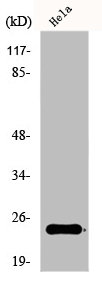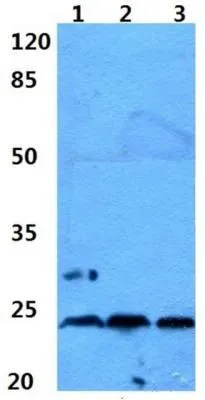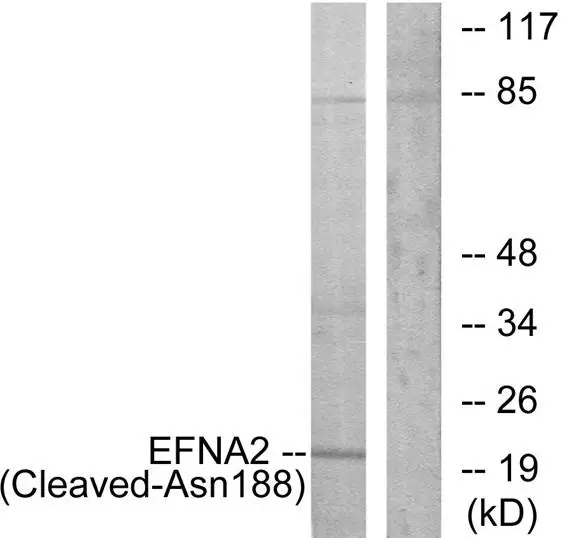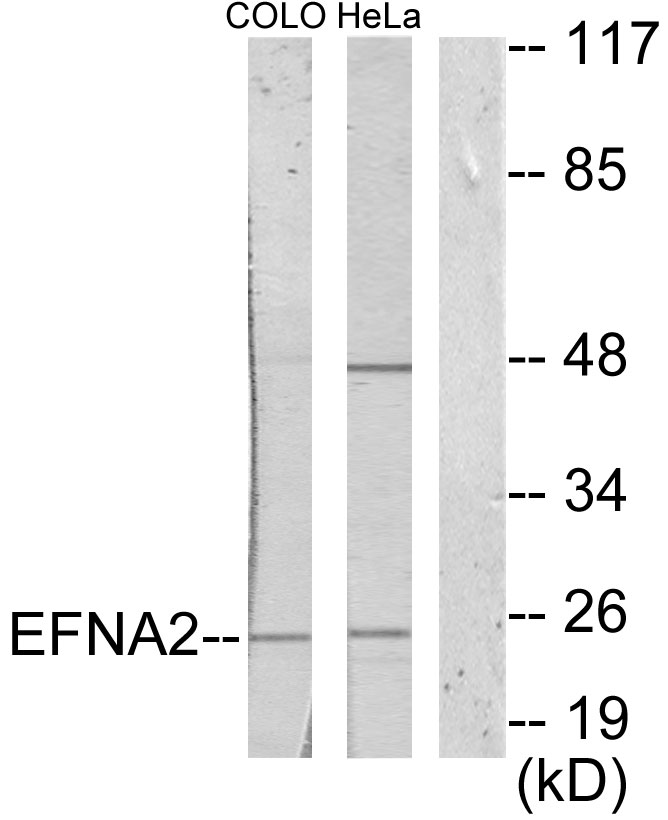![ICC/IF analysis of COS7 cells transiently transfected with Ephrin A2 plasmid using GTX84591 Ephrin A2 antibody [2D6]. ICC/IF analysis of COS7 cells transiently transfected with Ephrin A2 plasmid using GTX84591 Ephrin A2 antibody [2D6].](https://www.genetex.com/upload/website/prouct_img/normal/GTX84591/GTX84591_1141_ICCIF_w_23061420_843.webp)
ICC/IF analysis of COS7 cells transiently transfected with Ephrin A2 plasmid using GTX84591 Ephrin A2 antibody [2D6].
Ephrin A2 antibody [2D6]
GTX84591
ApplicationsFlow Cytometry, ImmunoFluorescence, Western Blot, ImmunoCytoChemistry
Product group Antibodies
TargetEFNA2
Overview
- SupplierGeneTex
- Product NameEphrin A2 antibody [2D6] - Overexpression Validated
- Delivery Days Customer9
- Application Supplier NoteWB: 1:2000. ICC/IF: 1:100. FACS: 1:100. *Optimal dilutions/concentrations should be determined by the researcher.Not tested in other applications.
- ApplicationsFlow Cytometry, ImmunoFluorescence, Western Blot, ImmunoCytoChemistry
- CertificationResearch Use Only
- ClonalityMonoclonal
- Clone ID2D6
- Concentration0.6 mg/ml
- ConjugateUnconjugated
- Gene ID1943
- Target nameEFNA2
- Target descriptionephrin A2
- Target synonymsELF-1, EPLG6, HEK7-L, LERK-6, LERK6, ephrin-A2, HEK7 ligand, eph-related receptor tyrosine kinase ligand 6
- HostMouse
- IsotypeIgG2b
- Protein IDO43921
- Protein NameEphrin-A2
- Scientific DescriptionThis gene encodes a member of the ephrin family. The protein is composed of a signal sequence, a receptor-binding region, a spacer region, and a hydrophobic region. The EPH and EPH-related receptors comprise the largest subfamily of receptor protein-tyrosine kinases and have been implicated in mediating developmental events, particularly in the nervous system. Based on their structures and sequence relationships, ephrins are divided into the ephrin-A (EFNA) class, which are anchored to the membrane by a glycosylphosphatidylinositol linkage, and the ephrin-B (EFNB) class, which are transmembrane proteins. Posttranslational modifications determine whether this protein localizes to the nucleus or the cytoplasm. [provided by RefSeq]
- Storage Instruction-20°C or -80°C,2°C to 8°C
- UNSPSC12352203

![WB analysis of various cell lines using GTX84591 Ephrin A2 antibody [2D6]. Loading : 35 ug per lane Dilution : 1:200 WB analysis of various cell lines using GTX84591 Ephrin A2 antibody [2D6]. Loading : 35 ug per lane Dilution : 1:200](https://www.genetex.com/upload/website/prouct_img/normal/GTX84591/GTX84591_3547_WB_w_23061420_232.webp)
![WB analysis of HEK293T cells transfected with Ephrin A2 plasmid (Right) or empty vector (Left) for 48 hrs using GTX84591 Ephrin A2 antibody [2D6]. Loading : 5 ug per lane WB analysis of HEK293T cells transfected with Ephrin A2 plasmid (Right) or empty vector (Left) for 48 hrs using GTX84591 Ephrin A2 antibody [2D6]. Loading : 5 ug per lane](https://www.genetex.com/upload/website/prouct_img/normal/GTX84591/GTX84591_4483_WB_w_23061420_563.webp)
![FACS analysis of HEK293T cells transfected with either Ephrin A2 plasmid(Red) or empty vector control plasmid(Blue) using GTX84591 Ephrin A2 antibody [2D6]. FACS analysis of HEK293T cells transfected with either Ephrin A2 plasmid(Red) or empty vector control plasmid(Blue) using GTX84591 Ephrin A2 antibody [2D6].](https://www.genetex.com/upload/website/prouct_img/normal/GTX84591/GTX84591_468_FACS_w_23061420_612.webp)


![ICC/IF analysis of COS7 cells transiently transfected with Ephrin A2 plasmid using GTX84588 Ephrin A2 antibody [2B7].](https://www.genetex.com/upload/website/prouct_img/normal/GTX84588/GTX84588_1139_ICCIF_w_23061420_950.webp)
![ICC/IF analysis of COS7 cells transiently transfected with Ephrin A2 plasmid using GTX84590 Ephrin A2 antibody [4C3].](https://www.genetex.com/upload/website/prouct_img/normal/GTX84590/GTX84590_1140_ICCIF_w_23061420_359.webp)




